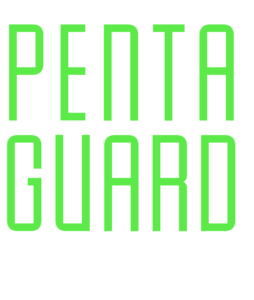A few years ago, the question of where Americans worked seemed settled. The vast majority commuted daily to offices: glass towers, converted warehouses, the hum of copiers and coffee makers forming the backdrop of working life. That consensus ended in the spring of 2020 and, though office life has regained some of its old ground, the fault lines persist. Today, hybrid work is not as universal as some predicted, but it is a persistent reality for millions.
This partial dispersion of the workforce has produced a quieter revolution in business technology, one that is easiest to see in the domain of cybersecurity. The endpoint—the laptop at a kitchen table, the smartphone checked between meetings at a coworking space, the tablet used for a quick email before boarding a plane—has become the silent, omnipresent frontline in the defense of sensitive information. The perimeter, once neatly defined by firewalls enclosing office networks, is now porous and shifting.
Not long ago, the prevailing wisdom was that strong passwords and regular security training could hold the line. But as endpoints have multiplied and diversified, so too have the risks. The hybrid workforce, by design, resists centralization. Employees’ devices use public Wi-Fi, home routers, and corporate VPNs, all while handling proprietary data and, often, personal information protected by law. The attack surface is wider than ever, and cybercriminals—many now wielding tools powered by artificial intelligence—are both opportunistic and patient.
The changing face of endpoints.
The endpoint’s evolution is not only quantitative. It is not just that there are more laptops, tablets, or phones connecting from more places. It’s that the very category of endpoint has grown: smart home assistants, wireless printers, and IoT devices all extend the reach of the network, and each represents a potential vector for compromise. A vulnerability in a single device can be a passport for attackers intent on moving laterally through a company’s infrastructure.
The response, among organizations that are highly aware of regulatory and reputational risk, has shifted accordingly. Passwords, once the stalwart guardians of digital identity, are ceding ground to more sophisticated forms of authentication—biometrics, hardware security keys, and so-called “passkeys” that promise resilience against phishing. Multi-factor authentication, now widespread, is evolving beyond simple codes sent by SMS. Contextual authentication—where a login from an unfamiliar device in an unusual location prompts additional scrutiny—is increasingly standard.
Yet, technology alone is insufficient. The concept of “least privilege”—giving users only as much access as they need, and only for as long as they need it—has become doctrine, enforced not just through policy but through automation. Time-limited permissions and regular audits of user privileges are now necessary to prevent dormant accounts or forgotten credentials from becoming points of entry for attackers.
Endpoint visibility.
Perhaps the most significant challenge for organizations lies in maintaining visibility. The traditional IT asset inventory—a list of corporate-owned laptops and desktops—now seems quaint. Today, automated tools scan networks for shadow IT: unmanaged devices, personal phones, and even smart appliances that, intentionally or not, interact with sensitive systems. The principle is simple, if daunting: you cannot protect what you do not know exists.
Visibility, however, is only the beginning. As vulnerabilities proliferate, so too must the capacity to discover and address them before they become avenues for attack. Automated vulnerability scanning—once reserved for the largest enterprises—now runs quietly and continuously in the background of mid-sized organizations. These systems probe endpoints for weaknesses as they emerge, allowing for rapid remediation before a routine oversight becomes a headline.
Encryption, meanwhile, is enforced at every juncture. Data is rendered unreadable not only when stored or sent, but even during processing, insulating it from prying eyes should a device fall into the wrong hands. Patching—the once-routine task of updating software—has become a continuous process, automated where possible, as new vulnerabilities are discovered and exploited at an accelerating pace.
But even as vulnerabilities are discovered and patched, there remains the challenge of application sprawl. Application control has become an essential, if often invisible, safeguard—ensuring that only vetted, legitimate software can be installed or executed on company devices. By limiting the digital tools available to what is necessary and trustworthy, organizations reduce the risk of malware and unauthorized data exfiltration. It is a form of digital minimalism, and in an era of endless downloads, it is as much about discipline as defense.
The human element: security awareness training.
Despite these technological advances, the most unpredictable variable remains the human user. Security awareness training has moved beyond the perfunctory slideshow. The most forward-thinking organizations now use interactive, personalized programs that simulate phishing attempts and teach employees to recognize the subtle cues of social engineering. The training is ongoing, adjusting to new threats and individual user behavior.
The cost of weak endpoint security.
The stakes are not theoretical. Ransomware attacks, data breaches, and regulatory penalties are regular features of the news cycle. For many organizations, the question is not whether an incident will occur, but how quickly it can be detected, contained, and remediated. Endpoint detection and response systems, powered by machine learning, now sift through vast quantities of telemetry in real time, searching for the faint signatures of compromise.
Moving forward.
Endpoint security is not just a technical challenge—it is a cultural one. It asks organizations to extend trust carefully, to balance flexibility with vigilance, and to recognize that the boundaries between personal and professional, home and office, are not so easily drawn.
Hybrid work may not be universal, but it is common, and the era of the hardened perimeter is over. In its place, we find a world where the endpoint is both the gateway and the guard. The task now is not to retreat behind walls, but to build resilience into every device, every user, and every connection—wherever work happens to be.














